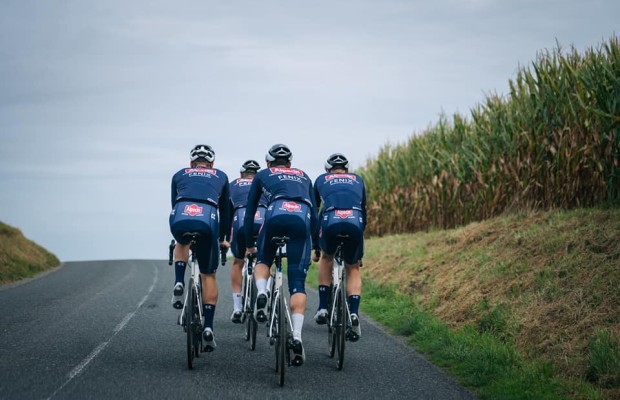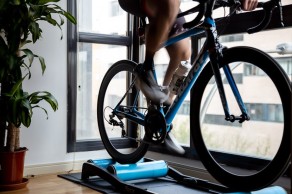When you accelerate, you can throw your teammate from behind. How to avoid it?
We all have in mind the recent fall of Wout van Aert that has caused him to miss a large part of the classics, a fall that occurred, as his teammate Tiesj Benoot recounted, when he stood up to increase the pace, when they were riding at full speed and he felt Wout touch his rear wheel and go down. A situation, the consequences when the cyclist in front of us stands up on a climb or to accelerate, which are common occurrences in group rides.

Avoid falls in group rides when standing up
I'm sure all of you have experienced this situation on one of your bike rides. You are riding close behind a teammate, almost drafting to minimize the wind resistance that day. Suddenly, the cyclist in front of you stands up and it feels like their bike is momentarily stuck. You are so close to their wheel that you don't have time to react and end up doing what is known as a 'sharpening' and end up on the ground.
This situation, like all those we encounter on the road, can often be anticipated and we can prepare for what is about to happen to avoid being caught off guard. However, sometimes we don't expect the rider in front to stand up and even less to abruptly move the bike backwards, leading to inevitable contact, whether it results in a fall or not.
RECOMENDADO

Benefits of training in the cold

The cyclist's patience: how long, gentle training sessions build your best season

Tips for cycling in the rain

25 cycling gifts ideas to get it right

When do helmets have to be changed? Do they have an expiration date?

Some reasons to stay away from the road in winter

This sudden movement that many make, causing the rear wheel to get stuck, has a lot to do with how one stands up. Often done abruptly and with little control, shifting the weight forward which, following Newton's third law, results in an opposite response from the bike causing the rear wheel to slide backwards.
Therefore, the first thing should be to optimize our pedaling technique, something that almost no one emphasizes, so that our movements on the bike are as smooth as possible. Not only to avoid the risk of causing a fall but, thinking practically, not to waste watts on these abrupt movements. Undoubtedly, the best way to learn to stand up without moving the bike is to use the traditional three-roller roller where making this sudden movement when standing up inevitably results in the wheel coming off the roller. At first, it can be extremely difficult but little by little you will get the hang of it and soon you will be able to stand up and even sprint on the rollers without the bike moving longitudinally.

As cyclists riding in a group, we must know who we can stick close to. With teammates we know well and ride with regularly, there should generally be no problem as the understanding is usually great and we all know how the other moves on the bike. However, if we ride behind someone we don't know, we must be very confident in our bike handling skills and reaction capacity before getting close to their rear wheel. In any case, we can always position our wheel slightly to one side or the other so that, in case they move the bike backwards when standing up, we have room to avoid contact.
Furthermore, it has become popular lately in group rides to signal with elbows that we are going to stand up. Just as we ask for a relay by moving one elbow or the other, the movement of both elbows at the same time would indicate that we are going to stand up so that the rider behind us is aware.